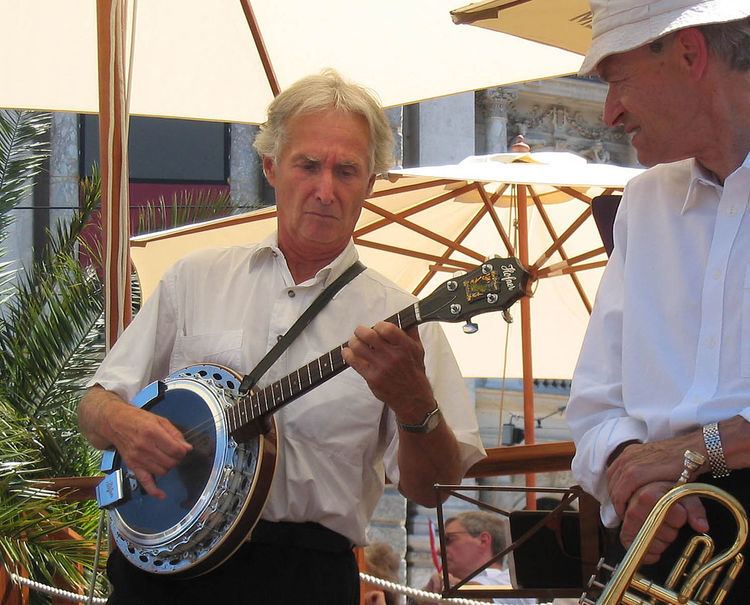Other names banjo, banjar Inventor(s) African slaves Timbre varies with setup | Classification string Developed 1700s | |
 | ||
Volume medium to high (acoustic) | ||
The 4-string banjo is any one of a number of long-necked lute-like stringed instruments with a hollow resonator body and four strings.
Contents
History
The instrument was particularly popular in the United States in the early 20th century, and extensively used in jazz. It was also available as a hybrid banjo-ukulele. It enjoyed a brief renaissance in the late 1940s with Mike Pingatore's hit, a revival of "I'm Looking Over a Four-Leaf Clover".
Tuning
A four-string banjo has a number of different tunings. Popular ones include DGCE, DGCD and CGBD. The samba banjo has the same tuning and range as the cavaquinho, but its timbre is quite different, sounding like a traditional banjo but pitched higher. It is played with a pick for rhythm accompaniment, with sophisticated strumming beats; thus it is a primarily a rhythmic instrument, and virtuosity is sometimes considered to be based on breaking repetitive patterns and surprising the listener with unexpected and inventive rhythmic figures, while keeping the rhythm steady.
Variations
In Brazil it is an important instrument also known as "Samba-banjo" or banjo-cavaco, derived from the cavaco, and is especially associated with Samba and its variants. The Brazilian 4-string banjo was first introduced by musician Almir Guineto in the late 1970s and early 1980s, attending on one hand the necessity for a louder instrument similar to the cavaco, and on the other, the drive for innovation.
